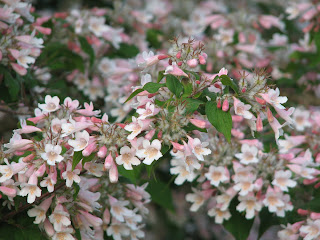With a bad lower back, an arthritic left knee and right ankle, gardening has become a bit more of a challenge these past few years. I find I don’t have the stamina I once did and all-day gardening marathons are out of the question. This has led to my current project of renovating the entire garden to minimize pain and suffering of joints and generally lead to a more laid back gardening experience.
Last time, I focused on the high-maintenance plants I am getting rid of or at least relocating to wilder areas. This post, I want to tell you about the plants I am introducing that won’t require the constant care and fussing that many of my existing plants did. We’ll start with trees and shrubs this month and discuss perennials and annuals in a later post.
Here is where I get to tell you about my biggest, and favorite, garden mistake; biggest in that it will be the hardest to correct and favorite because I keep making it. One of the things you must do when planning a new garden is figure out where to put the trees and shrubs first. They are, or will be, the largest features in your little patch of Eden and special care should be taken with their placement. Unless you’re like me when I first started and think you don’t need trees and the only shrubs you need are roses.
With time comes wisdom they say, and I’ve seen that trees and shrubs do indeed make a huge difference in the garden. These plants contribute winter-interest to the view, condos and fast-food for birds, and comfortable shade for you, depending on the varieties you choose. They also make wonderful accents and focal points to your garden, helping to draw the viewer’s eye to special areas. If you have a scene that is better unseen, these plants can help you hide it. Lastly, certain shrubs, with their dense branches and leaves, often reduce your weeding chores.
One tree to be added to my menagerie is the paperbark maple (Acer griseum). Originating from China, the paperbark maple is a slow-growing tree that only reaches 20 to 30 feet and approximately 15 to 20 feet in width. It is hardy to zone 4 (-30 degrees) and likes average garden soil. It will not tolerate drought, however, and is best grown in well-drained, moist soil.
What makes this tree special are its leaves and bark. The leaves are trifoliate, looking a bit like poison ivy (“leaves of three, let it be”), and turn a rich red in the fall. The bark is a lovely cinnamon color and peels off as it grows older, similar to a white birch. The only care this tree will require is protecting it from critters until it is big enough to fend for itself and raking the leaves for the compost pile once a year. My kind of plant!

